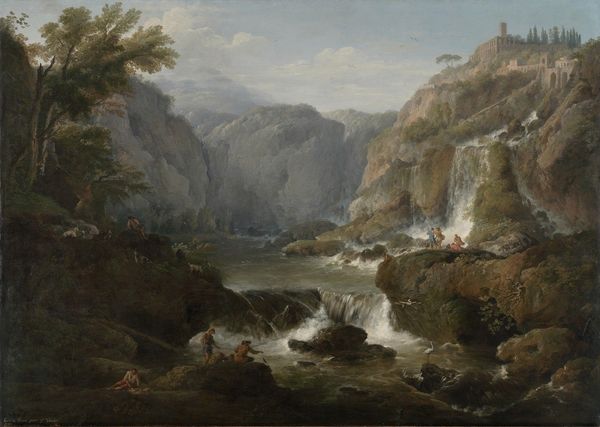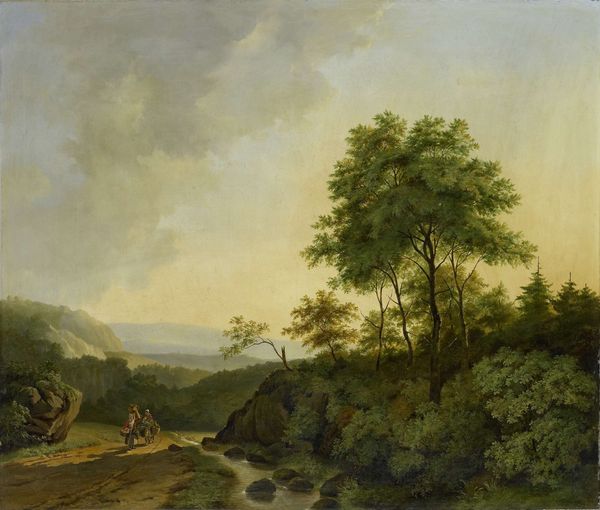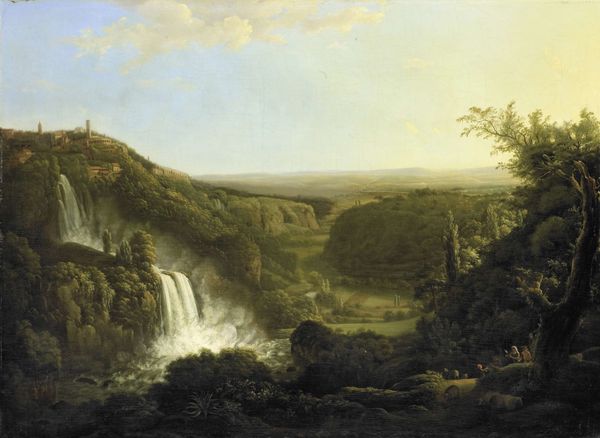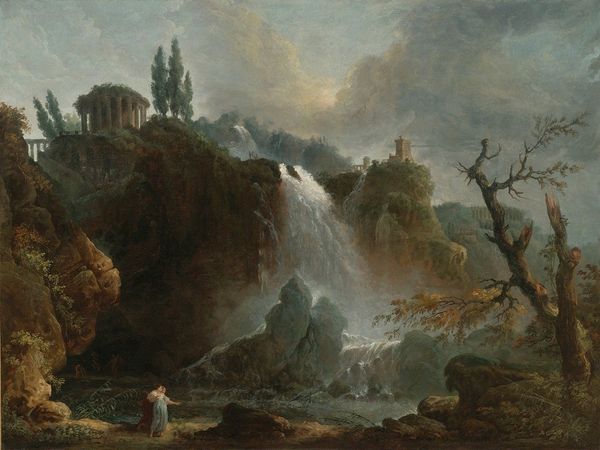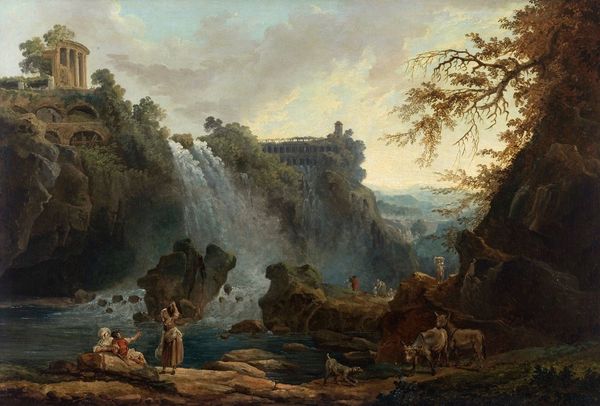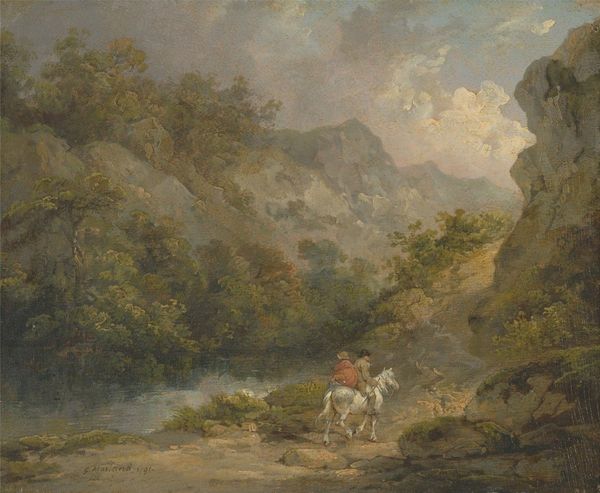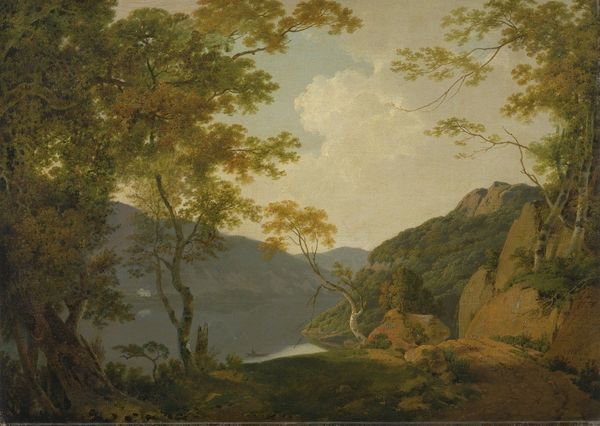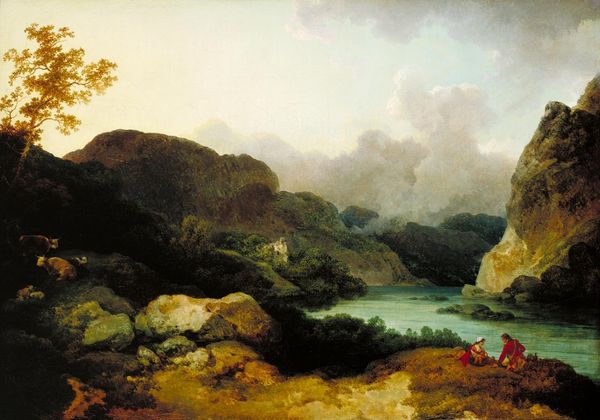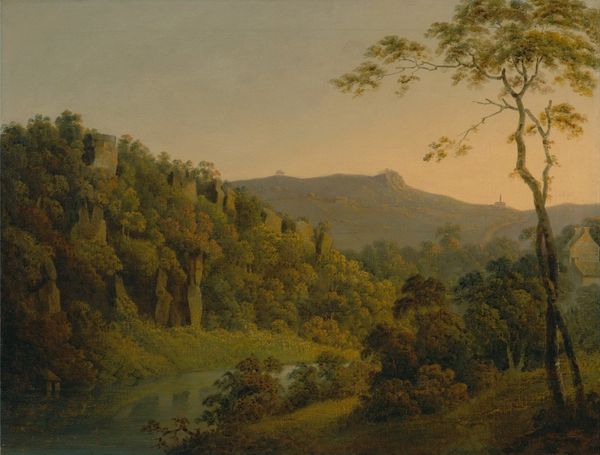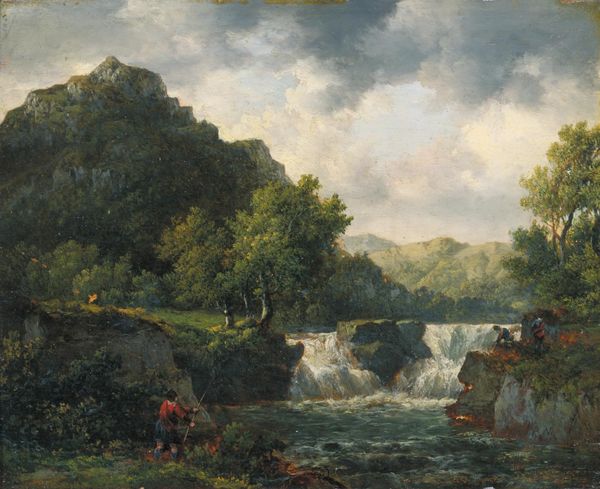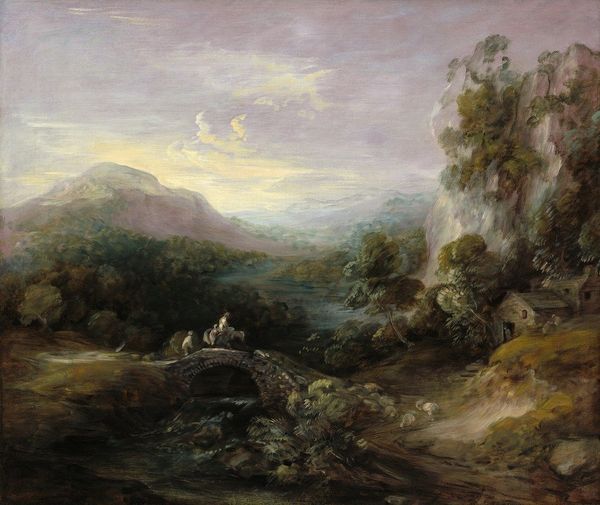
painting, oil-paint
#
baroque
#
painting
#
oil-paint
#
landscape
#
oil painting
#
romanticism
#
history-painting
Dimensions: 137 x 100 cm
Copyright: Public domain
Editor: We're looking at "Dessinateurs Face à Une Cascade Au Pied Du Tivoli," an oil painting. The artist is Claude-Joseph Vernet. It's… kind of hazy. The composition is complex, with the waterfall and then that city in the distance, up on the hill. How do you interpret this work? Curator: Initially, note the painterly approach, it's quite bravura, no? Vernet clearly delights in the surface materiality of the paint. Observe how the artist juxtaposes the smooth, almost porcelain finish on the sky, against the roughened impasto used to define the craggy rocks and cascading water. It provides a study in contrasts, does it not? Editor: Yes, it does! I hadn't really noticed how different the textures were, especially between the sky and the rocks. Curator: Exactly. Furthermore, observe how Vernet uses a relatively restrained palette—various shades of greens, browns, and muted blues and whites. But the subtle variations in tone are what creates depth and atmosphere, giving it almost an unreal, idealized aesthetic. Editor: So it's the artist’s technique that helps create the landscape's mood, its overall structure. I see that. Curator: Precisely. It speaks to the ability of art to both represent and idealize nature. We must not view such works merely as faithful documents. Ask yourself, does it suggest some yearning for a past, a time and place somehow unspoiled? Editor: I think you're right, there's a sense of looking back, creating something ideal rather than real. Thanks for pointing out how to "decode" it just by looking at what's there. Curator: An art object offers itself willingly if you but approach it with eyes trained to see. It has been a pleasure.
Comments
No comments
Be the first to comment and join the conversation on the ultimate creative platform.
